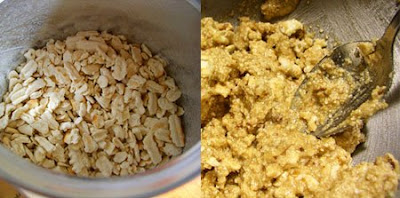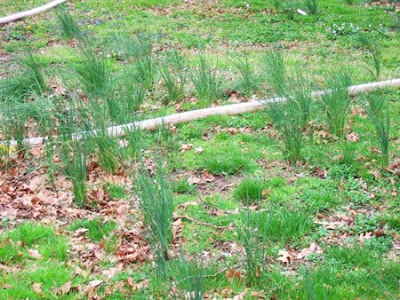 You are gonna love this torte.
You are gonna love this torte.
I first heard about the Huguenot Torte when paging through my most recent issue of Cuisine at Home. The photos promised a luscious-looking apple and pecan treat, that “…Hails from the Ozarks, but was popularized in South Carolina by French Protestant immigrants known as the Huguenots.” An apple dessert that also has a historical provenance? Excellent.
Then I came across the same recipe in the pages of The First Ladies Cookbook, who listed it as one of Martin van Buren’s favorite dishes. “Well, if MVB likes it,” I thought, “It has to be good!”
As it turns out, this dish had little to do with the Huguenots, and nothing at all to do with our eigth president.
While researching a little further into the history of the Huguenot Torte, I can across this article in the New York Times. The article is part of a larger feature called Recipe Redux, wherein the author revisits recipes that were printed in the Times in years past. Huguenot Torte first appeared in the paper in 1965: “The Times’s recipe came from “The First Ladies Cook Book,†where it is featured in the chapter on Martin Van Buren — a historical impossibility because the dessert was created nearly 100 years after his term.”
According to culinary historian John Martin Taylor:
“…The torte descends from a more recent Midwestern dessert called Ozark pudding. Huguenot torte, Taylor said, first showed up in print in 1950 in “Charleston Receipts,†a successful community cookbook in which the torte recipe was attributed to Evelyn Anderson Florance (then Mrs. Cornelius Huguenin). In the 1980s, Taylor tracked her down in a nursing home and discovered that she had eaten Ozark pudding on a trip to Galveston, Tex., in the ’30s. After fiddling with the recipe, she renamed it Huguenot torte after Huguenot Tavern, a Charleston restaurant where she made desserts. The tavern became known for the torte.”
I don’t hold the untruths that have been propagated about the Torte against it, because in actuality, this torte is one of the most amazing desserts I’ve ever had. It takes advantage of the fall apple harvest and is incredibly simple to put together. It has very little flour and a lot of eggs and sugar, which results in the most fascinating texture combination after it is baked: the top is the crustiest, crispiest meringue, while the inside is gooey, buttery caramel.
This dessert is astounding and due for a revival; in fact, I bet Martin van Buren would have loved it, had he been alive when it was created.
***
Huguenot Torte (1930s)
Ingredients taken from The First Ladies’ Cookbook (1965)
Directions inspired by Cuisine at Homemagazine (2009)
1 cup peeled and chopped tart cooking apples
1 cup coarsely chopped pecans
2 eggs
1 1/2 cups sugar
1 teaspoon vanilla
4 tablespoons all-purpose flour, mixed with
2 1/2 teaspoons baking powder and
1/2 teaspoon salt
1 cup heavy cream, whipped with 2 tablespoons sugar and 1 teaspoon almond extract.
1. Preheat over to 325 degrees. Grease a 9 x 13 inch baking dish; or line it with parchment paper.
2. Beats eggs and vanilla at high speed. Add the sugar a little at a time, until the eggs are light and creamy, about five minutes.
3. Whisk together flour, baking powder, and salt. Mix into egg mixture until just combined.
4. Fold in apple and pecans.
5. Pour into baking dish. Baked torte 35-45 minutes, until the top is golden brown.
Cool five minutes and serve warm, cut into squares. Don’t get stressed out when the Torte crumbles as it is dished out; that’s its nature. A dollop of lightly sweetened, almond flavored whipped cream is an excellent compliment. This Torte tastes even better the next day, after being warmed a few minutes in the oven.










 most New York matzo balls are fist-size, like the ones you’ll find at Katz’s or the 4th Ave. Deli. These featherballs were to be rolled the size of walnuts. Their are also two types of matzo balls–the light “floaters” and the dense “sinkers.” Neither are wrong, just a personal preference.
most New York matzo balls are fist-size, like the ones you’ll find at Katz’s or the 4th Ave. Deli. These featherballs were to be rolled the size of walnuts. Their are also two types of matzo balls–the light “floaters” and the dense “sinkers.” Neither are wrong, just a personal preference.














